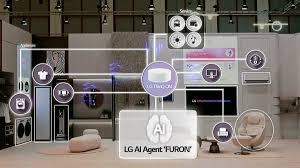In today’s world, where energy conservation and cost-saving measures are increasingly important, smart home devices have emerged as powerful tools for maximizing energy efficiency. These innovative technologies not only provide convenience but also help homeowners reduce their carbon footprint and save money on utility bills. Let’s explore how various smart home devices can contribute to a more energy-efficient household.
Smart Thermostats: The Heart of Energy Savings
At the forefront of energy-efficient smart home technology are smart thermostats. These devices have revolutionized the way we manage heating and cooling, which typically consume the most energy in a home. ENERGY STAR certified smart thermostats can save homeowners 10-15% on their energy needs while improving comfort and convenience6. These intelligent devices learn from occupants’ patterns and adjust heating and cooling cycles accordingly, maintaining a consistent temperature and preventing energy waste4.
Smart thermostats offer features like geofencing, which uses GPS technology to detect when residents are away from home and automatically adjusts the temperature to save energy. They also provide remote access via smartphone apps, allowing users to control their home’s temperature from anywhere8. Some models even generate monthly energy usage reports, helping homeowners track and optimize their consumption over time.
Smart Lighting: Illuminating Efficiency
Smart lighting systems are another key component in creating an energy-efficient home. LED bulbs paired with smart controls can significantly reduce electricity usage compared to traditional lighting. These systems allow for precise scheduling, dimming capabilities, and occupancy-based controls. For instance, lights can be programmed to turn off automatically when a room is unoccupied or adjust their brightness based on the time of day3.
Many smart lighting solutions can be integrated with other smart home devices, creating a cohesive ecosystem that maximizes energy savings. For example, lights can be set to turn off automatically when the smart security system is armed, ensuring no energy is wasted on illuminating an empty house.
Smart Home Energy Management Systems
For a comprehensive approach to energy efficiency, Smart Home Energy Management Systems (SHEMS) offer an all-encompassing solution. ENERGY STAR recognizes SHEMS packages that include, at minimum, a certified smart thermostat, smart lighting, and plug load control1. These systems simplify energy management by:
- Facilitating schedules for smart devices
- Suggesting energy-saving actions based on usage patterns
- Automatically controlling devices based on occupancy
SHEMS can be customized to fit individual lifestyles and can incorporate additional devices like ENERGY STAR appliances and EV chargers for even greater energy savings.
Smart Appliances: Efficiency in Every Corner
Modern smart appliances contribute significantly to a home’s overall energy efficiency. From refrigerators to washing machines, these devices use advanced algorithms to optimize their operations based on usage patterns4. For example, a smart refrigerator can adjust its cooling cycles during off-peak hours, while a smart washing machine can recommend the most energy-efficient wash cycles based on load size and fabric type.
Many smart appliances can be integrated with home energy management systems, allowing for coordinated energy-saving strategies across all devices. This interconnectedness ensures that energy is used judiciously throughout the home.
The Role of Smart Plugs and Power Strips
Smart plugs and power strips play a crucial role in managing “vampire” energy draw from devices that consume power even when not in use. These intelligent outlets can be programmed to cut power to connected devices during certain hours or when they’re not needed, eliminating standby power consumption and further reducing energy waste7.
Monitoring and Data Analysis
One of the key advantages of smart home devices is their ability to provide detailed energy consumption data. Many systems offer user-friendly interfaces that allow homeowners to track their energy usage in real-time, identify energy-hungry appliances, and make informed decisions about their consumption habits5. This data-driven approach empowers users to continuously optimize their energy usage and achieve greater savings over time.
Integration and Automation
The true power of smart home devices lies in their ability to work together seamlessly. By integrating various smart devices through a central hub or platform, homeowners can create automated routines that maximize energy efficiency. For instance, a “goodnight” routine could lower the thermostat, turn off all lights, and ensure all unnecessary appliances are powered down9.
The Impact on Energy Bills
The cumulative effect of these smart home technologies can be substantial. On average, smart homes use 30-40% less energy than conventional home setups7. While the initial investment in smart devices may seem significant, the long-term savings on energy bills can provide an excellent return on investment. Some homeowners report saving up to 15% on their total energy bills after implementing smart home technologies7.
Looking to the Future
As smart home technology continues to evolve, we can expect even more innovative solutions for energy efficiency. The integration of artificial intelligence and machine learning will likely lead to even smarter systems that can predict and adapt to our needs while minimizing energy waste. Additionally, as more utilities offer dynamic pricing models, smart home devices will play a crucial role in helping homeowners take advantage of lower rates during off-peak hours.
In conclusion, smart home devices offer a powerful means of maximizing energy efficiency in our homes. From intelligent thermostats to comprehensive energy management systems, these technologies provide homeowners with unprecedented control over their energy consumption. By embracing these smart solutions, we can create more sustainable living spaces, reduce our environmental impact, and enjoy significant savings on our energy bills.



0 Comments